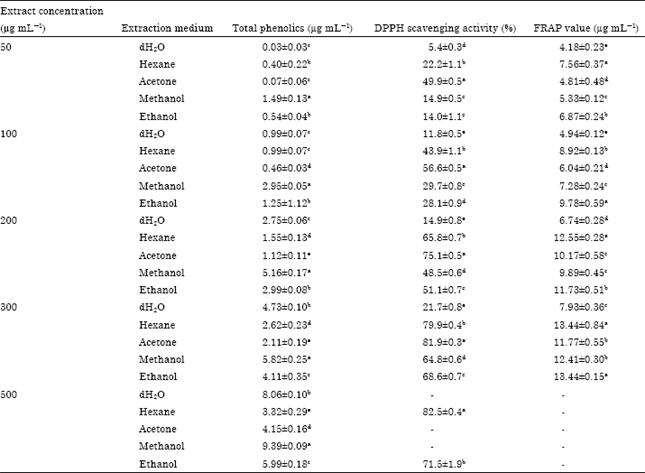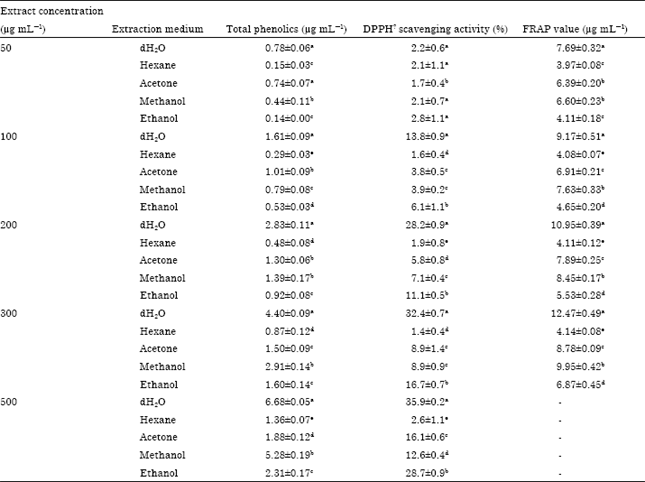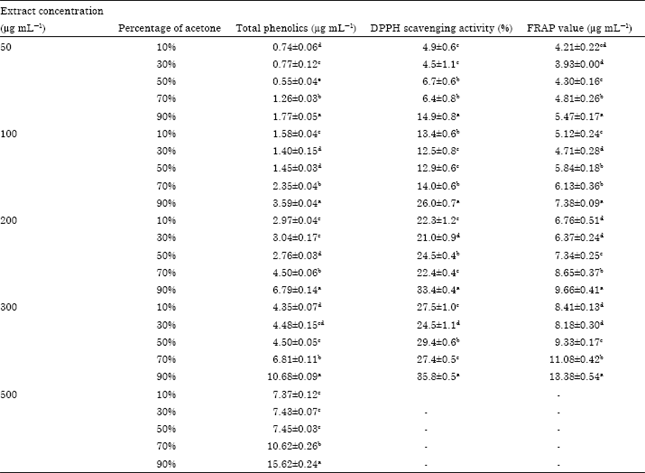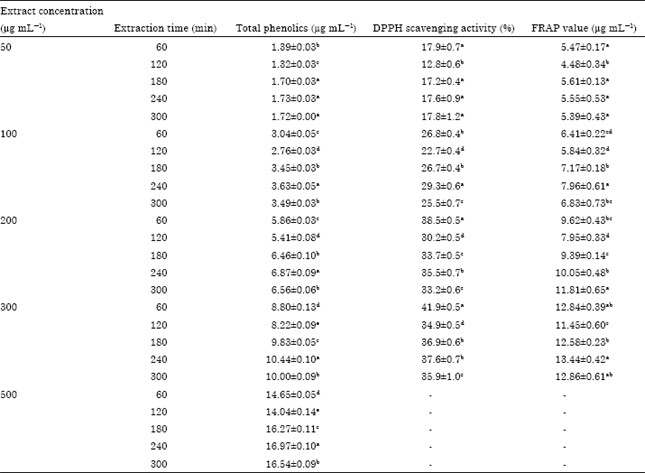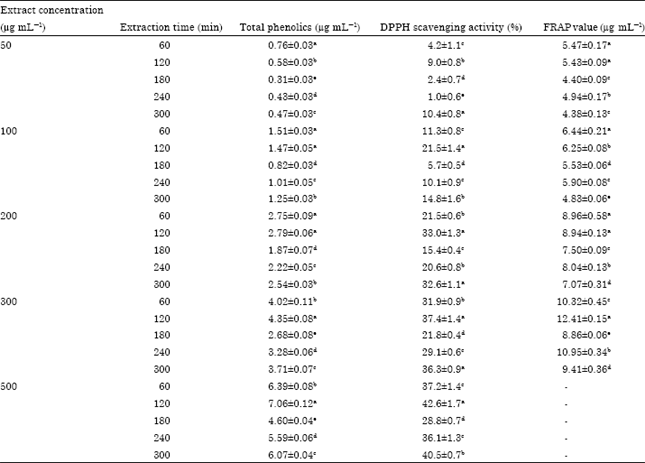Research Article
Influence of Different Extraction Parameters on Antioxidant Properties of Carica papaya Peel and Seed
Department of Food Science and Nutrition, Faculty of Applied Sciences, UCSI University, No. 1, Jalan Menara Gading, UCSI Heights, 56000 Kuala Lumpur, Malaysia
Y.K. Ang
Department of Food Science and Nutrition, Faculty of Applied Sciences, UCSI University, No. 1, Jalan Menara Gading, UCSI Heights, 56000 Kuala Lumpur, Malaysia
H.E. Khoo
Department of Nutrition and Dietetics, Faculty of Medicine and Health Sciences, Universiti Putra Malaysia, 43400 UPM Serdang, Selangor, Malaysia
H.S. Yim
Department of Food Science and Nutrition, Faculty of Applied Sciences, UCSI University, No. 1, Jalan Menara Gading, UCSI Heights, 56000 Kuala Lumpur, Malaysia










